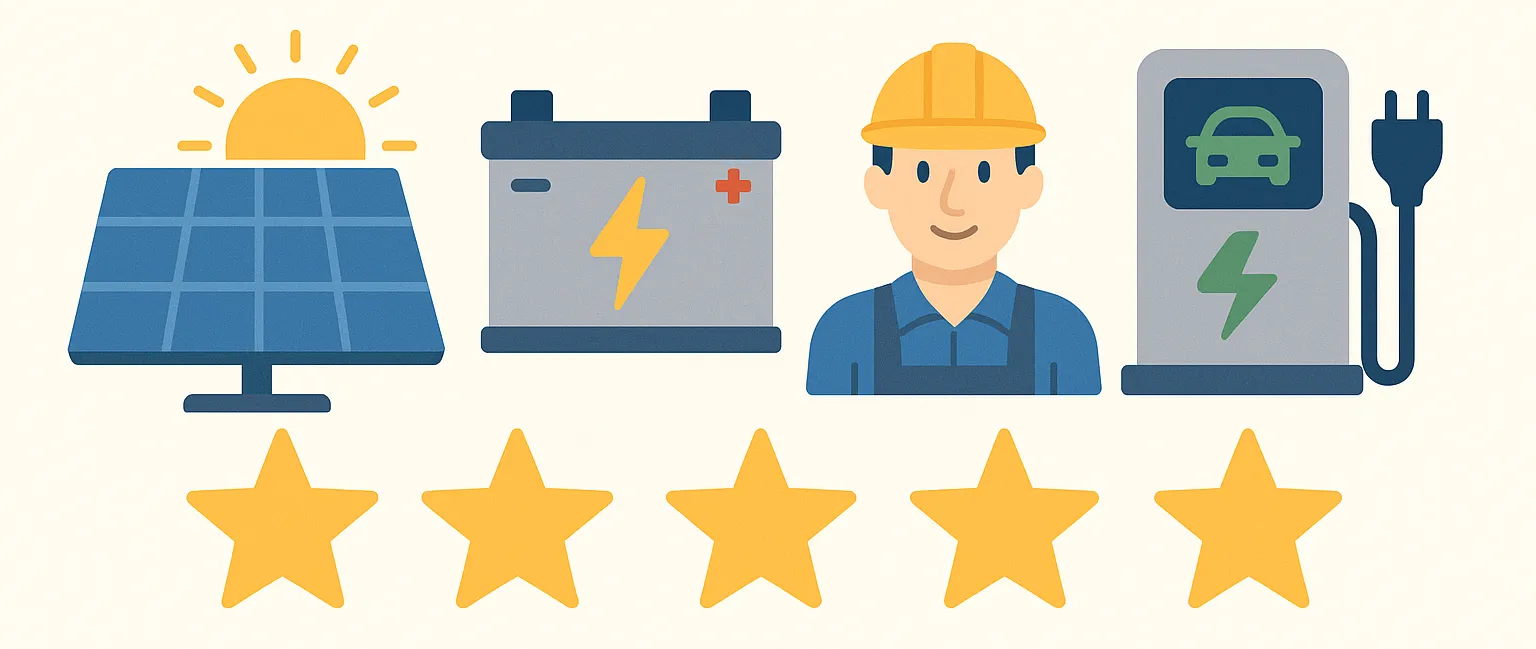When you’re one of the best, award-winning commercial solar installer like Todae Solar, it’s important to keep an eye on the future to see what new technologies are coming down the pipeline. Though current silicon solar panels are very popular and have only gotten more efficient and cost-effective over the years in commercial and industrial applications, improvements can always be made. One of those potential improvements that we’re going to look at today are perovskite solar panels.
What Is Perovskite? What Are Perovskite Solar Panels?
If you’re a big fan of chemistry, it may interest you to know that perovskite is a calcium titanium oxide mineral with a distinct chemical structure. Perovskite was discovered back in 1839 in the Russian Ural Mountains and was named after famous Russian mineralogist Lev Perovskite. If you’re more interested in green technology, though, what’ll excite you about this mineral is its potential use as a material for building solar panels. This might just be the next revolution for the commercial solar business.
What Are Solar Panels Made Out of Now?
Currently, the most common material used to make solar panels is silicon – in fact, approximately 95% of solar panels are made out of silicon. Its popularity is a no-brainer. Silicon is the second most abundant material on the planet (after oxygen) and the resulting solar panels are durable. Panels made out of silicon are expected to last for 25 years or more, through almost any weather condition – rain, heat, humidity, anything. There’s no question as to why businesses are so confident in getting silicon solar panels installed.
Why Do Scientists Want to Make the Switch?
Though silicon is abundant and results in durable panels, there is a limit to their photovoltaic efficiency. In simpler terms, that means that silicon solar panels can only convert so much sunlight into electricity – typical rates fall around 16% to 18% in real-world applications, though researchers say that the theoretical limit is 29%.
Some researchers say that perovskite, however, has a theoretical limit of around 35%. Basically, they get more electricity from the same amount of sunlight, and that kind of efficiency is exactly what you want out of your solar power system, even in sunny Australia.
However, it’s not just perovskite’s potential photovoltaic efficiency that has researchers so excited. The process of making panels out of perovskite is projected to be much easier and much cheaper as well. In an interview, Thomas White, researcher and professor at the Australian National University, had this to say:
“The beauty of [perovskite] is you can process [it] from solution. Unlike silicon, where you have to go through this very industrialized refinement to get very high purity silicon, these materials we buy effectively as a powder, we mix them into a solvent, and then we can spin coat them or coat them in very thin layers onto a glass substrate, and that potentially makes them very cheap if you can scale it up.”
Basically, the manufacturing process for perovskite panels is simple and straightforward.
So, not only is perovskite more efficient, its manufacturing process has the potential to be trouble-free as well. Why, then, are we not seeing perovskite panels out in the wild right now?
The Cons of Perovskite
That perovskite panels are easy to make is something of a double-edged sword. Because the mineral dissolves easily, it means that the resulting panels break down easily in humid conditions. On top of that, they can’t handle heat as well as silicon panels, which is a huge issue for a technology designed to harness the power of the sun. If you’re getting an array of solar panels, you want them to last. Unfortunately, perovskite panels simply don’t have that ability yet.
Fortunately, though, there are potential fixes for this problem.
Silicon & Perovskite: Better Together?
Right now, one of the most well-researched solutions to perovskite’s durability problem is to simply combine it with silicon, which has long since proven its ability to handle heat and all sorts of weather conditions. With both silicon and perovskite layers in a solar panel, though, it’s not just durability that’s improved. Efficiency can go up as well. In fact, this increase in photovoltaic efficiency is what excites researchers the most.
Solar cells of different materials can be optimized to absorb different types of light, and when layered together, can create a panel with seriously impressive efficiency. Researchers think that these tandem cells can soar above forty or even fifty percent photovoltaic efficiency, which is a huge improvement over our current technology.
Looking To Solar Power’s Future Possibilities
As we can see, solar panel technology isn’t done evolving – far from it, in fact. With the promise of perovskite solar panels, it’s not hard to see solar panels becoming even more widespread and popular, while at the same time becoming more efficient and cost-effective. And, no matter what solar panels look like in the future, you can be sure that Todae Solar will continue to bring you award-winning service.
